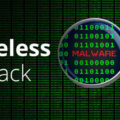Malware which can be enhanced always poses a huge risk to PC users, and the rise of open source malware like SapphireStealer is magnifying this problem.
Open source programs are those which have had their source code put online and made available not only for use, but also modification. This approach is usually chosen with the main objective being public, open collaboration between coders, and the resulting programs made available to the public for free. It’s the very definition of what the internet was created for, but this doesn’t mean these intentions are always well meaning. And the story of SapphireStealer makes for the perfect evidence.
What is SapphireStealer?
The name of SapphireStealer is somewhat of a giveaway in terms of what this malware does, it’s an information stealer. SapphireStealer was first published to GitHub (an online and public source code repository) towards the end of 2022. And it proved to be a hit. As well as being simple enough for basic hackers to launch attacks, SapphireStealer was open source and could be tinkered with by fellow hackers.
SapphireStealer originally started life with a basic set of capabilities, it would grab popular files – such as Word documents and image files – before emailing them to the hacker behind the attack. However, it wasn’t perfect, and there was plenty of room for improvement. It was a fantastic opportunity for the hacking community to see how they could enhance SapphireStealer. And this was exactly what they did.
By January 2023, new variants of SapphireStealer were detected which could steal a wider range of files, and this stolen data could now be relayed through Discord and Telegram servers. And, as it remained open source, anyone on the internet could now access these more robust and dangerous variants. SapphireStealer appears to infect victims through a variety of methods:
- Infected email attachments
- Malvertising
- Social engineering
- Illegal downloads
Minimizing the Threat of SapphireStealer
At present, SapphireStealer is relatively basic in terms of the threat it carries. It isn’t going to cause financial damage like, for example, ransomware will. However, it has evolved rapidly in less than a year, and its risk level is only going to rise higher. The fact that open source malware is proving so popular also indicates that more threat actors are going to enter the digital arena. Therefore, you need to make sure you IT infrastructures are heavily guarded:
- Use a firewall: a tried and trusted security measure, a firewall puts a digital barrier between your organization and the internet. This means that you can monitor incoming and outgoing traffic and put filters in place to mitigate attacks and allow access to trusted users.
- Make sure your employees are aware: SapphireStealer relies on a number of well-known infection methods, but these aren’t necessarily well-known to the average PC user. Accordingly, your employees need to understand the most basic attack methods and how to identify them e.g. the telltale signs of a phishing email.
- Install antivirus software: it may seem like a no-brainer, but many organizations fail to put an effective antivirus suite at the forefront of their defenses. Even free antivirus software, such as Kaspersky Free, can make a significant difference to your digital safety.
For more ways to secure and optimize your business technology, contact your local IT professionals.









